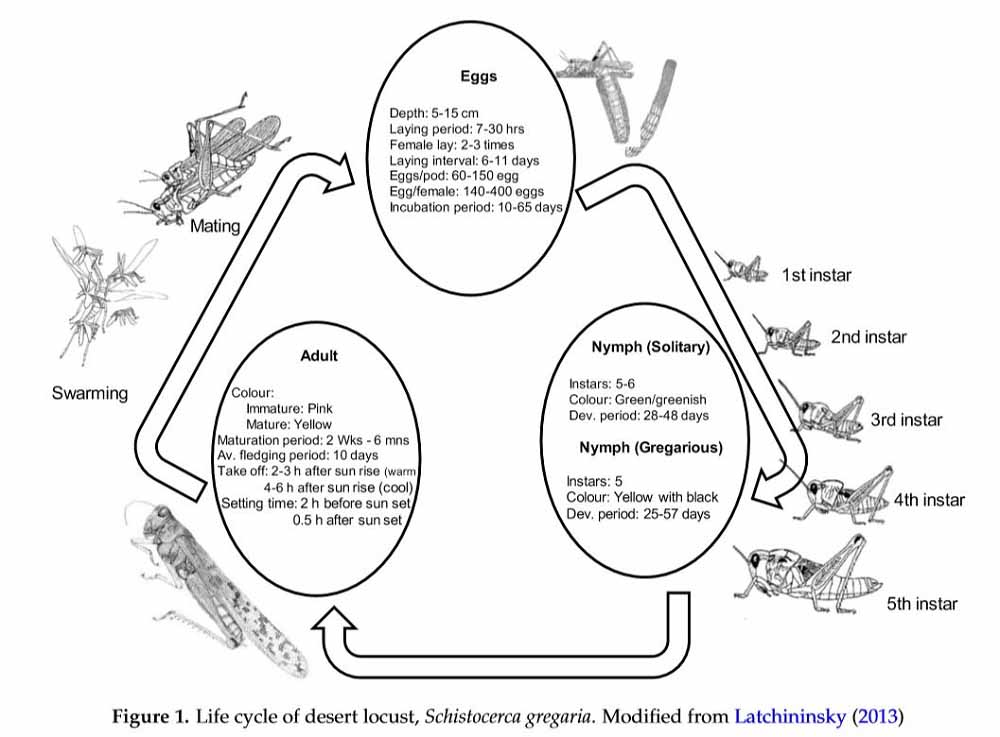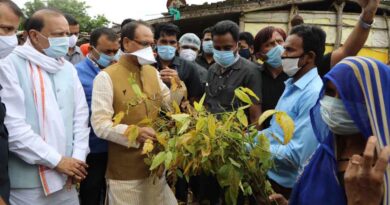Bangladesh prepares for possible locust invasion
24 August 2020, Bangladesh: ‘Aberrant and erratic climatic behaviour triggered by global warming’ has been highlighted as the cause of the ‘rapid and sudden upsurge’ of locusts unleashing destruction around the world as Bangladesh prepares to repel a possible invasion.
Read: Locust control operations crosses 5.63 lakh hectare in India
Dr Malvika Chaudhary, Asia Regional Coordinator for the CABI-led Plantwise programme, is lead author on a new paper published in Fundamental and Applied Agriculture, which suggests that a National Task Force could be formed to monitor the desert locust (Schistocerca gregaria) or any invasive insect pests in Bangladesh.
Dr Chaudhary, and colleagues on the paper from Bangladesh Agricultural University and the Food and Agriculture Organization of the United Nations (FAO), set out a series of recommendations to tackle any potential invasion of the desert locust including improved locust surveys, monitoring of vegetation, rain fall and soil moisture in potential seasonal breeding areas and research into alternatives to chemical pesticide control.
Read: Punjab Government assures paddy procurement, urges farmers not to harvest early
In Pakistan, the desert locust has been found infesting in Balochistan, Sindh, Panjab and Khyber Pakhtunkhwa province. The FAO estimates losses to Pakistan’s agriculture from locusts in 2020 could be as high $2.2 billion (PKR 353 billion) for winter crops, including wheat and potatoes, and nearly $3 billion for summer crops.
In addition, locusts usually arrive in India during the monsoon months, between July and October in previous years. But in 2020, the first sighting was reported as early as April 11. The trigger for this unusual pattern occurred in 2018, related to the cyclonic storms Mekunu and Luban, which impacted Oman and Yemen. These storms turned large desert areas in those countries into lakes, which created ideal places for the locusts to breed.

Dr Chaudhary said, “With remote chances of locusts entering into Bangladesh, it is still good to stay alert and keep communication with the FAO as they play a vital role in monitoring and controlling the deadly insect with supreme expertise.
Read: Double harvest for half the effort: ICRISAT
“Although it was forecast that swarms are less likely to reach Nepal and Bangladesh, Nepal has already seen an invasion of upwards of eight million locusts. This poses a threat to Bangladesh because of the infestation of swarms of locust in a neighbouring country like India and Nepal.
“Bangladesh is, therefore, encouraged to take anticipatory action by distinguishing the desert locust from other grasshoppers to avoid confusion, use an Android app called eLocust3m for reporting to national authorities and the FAO and mounting a public awareness campaign to avoid any unnecessary panic and confusion.”
Read: Jacto enters new market segment of seeding, autonomous spraying and sugarcane harvesting
Dr Chaudhary added that the Bangladesh Agricultural Research Council (BARC) has already held a meeting to discuss the options to manage any desert locust invasion and the FAO also convened a video conference of experts from organisations including the Ministry of Agriculture, various universities and USAID.
“The FAO has to provide general information on the locust situation to interested countries and to give timely warnings and forecasts of invasion. The Bangladesh Government can closely work together to create the awareness, formulate a long-term durable strategy and remove the desert locust panic,” she said.















